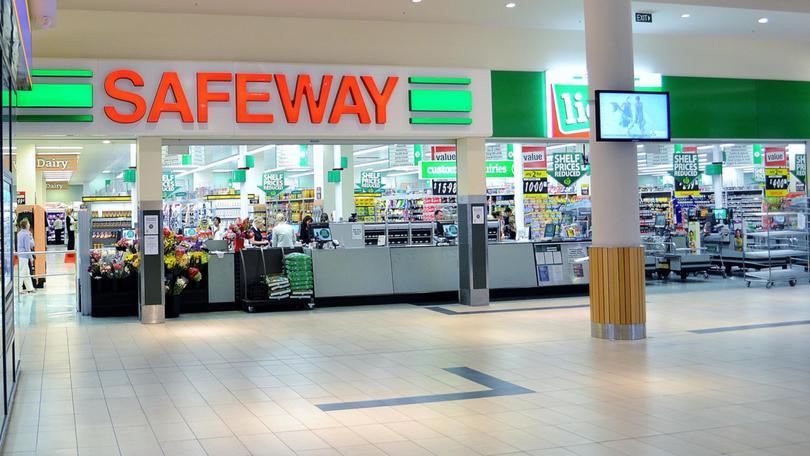How Woolworths and Coles grew their share of Australia’s grocery market

Once upon a time, Australian grocery shoppers were blessed for choice. They could take their pick from a raft of independent retailers and major supermarkets for their foodstuff needs and competition was bountiful, forcing the big players to behave.
Or at least that’s how the story seems to be told these days. Greater competition is needed but undoing decades of permissive takeovers is much easier said than done.
Metcash executives this week said the share of the market by the big two has grown from about 40 per cent in the 1980s to now between 70 per cent and 90 per cent in some areas.
Sign up to The Nightly's newsletters.
Get the first look at the digital newspaper, curated daily stories and breaking headlines delivered to your inbox.
By continuing you agree to our Terms and Privacy Policy.Names like Franklins, Action, Dewsons, Rainbow, Tuckerbag, Bi-Lo, Foodland and Newmart — among countless others — have disappeared from high streets and shopping centres around Australia as courts and the competition watchdog have approved takeovers, and as other mergers took hold at a corporate level — particularly as pushes towards larger scale became more prevalent.
Much of the concentration of brands took place in the late 1980s and early 1990s in most the country: a Coles Myer buying binge netted it Bi-Lo in 1987 and Shoey’s Food Barn in 1988, and in 1996, WA’s Newmart for $16 million as well. Meanwhile, fresh from buying two independent Tasmanian chains in the 1981 and 1982, Woolworths grabbed Victoria’s Safeway in 1985, which had earlier bought Jack the Slasher to expand through Queensland.
Franklins, in 2000 considered by the consumer watchdog as “one of the big three supermarket chains”, had a torrid end to its time in Australia. Its Hong Kong owners pulled out in 2001, leaving its 104 stores to be sold off to Woolworths, Coles in a 2:1 split. Some that survived, but only in NSW, were bought by Metcash in 2010 in a $215m deal.
The ACCC initially blocked Metcash’s acquisition of Franklins because it would give Metcash a monopoly on wholesaling in NSW but lost the case in court and chose not to appeal to the High Court.
Elsewhere, independents of the time either bought each other out or merged for strength in the distribution market. In 1992 there were eight grocery distributors but by the mid-2000s there was just one, IGA’s distributor Metcash.
Metcash itself in 2005 launched a successful hostile near-$3 billion takeover of the WA-headquartered Foodland which operated a string of separately named supermarkets, most notably Action which also had stores in Queensland and NSW. Sixty of its 81 supermarkets were sold to Metcash and the remainder to Woolworths.
Many others — among them Buy Rite, Cut Price, Rite-Way, Banana Joe’s and Tuckerbag — were swallowed up by FoodWorks, which still exists and trades via a range of more than 500 grocery stores the country, including Farmer Jack’s and its parent name.
Where the independents are now concerned is creeping acquisitions, where the bigger players snap up independent supermarkets to grow their share. Their submissions to the Senate inquiry noted an increase in the big two buying shopping centres and not renewing leases of independent supermarkets, with their outlets instead moving in.
A review of grocery matters before the Australian Competition and Consumer Commission since 1995 shows a mixed record of intervention. Past ACCC commissioners have relied on legal requirements for competition to be “substantially” lessened by a takeover.
“Competition law does not aim to preserve competitors or protect certain sectors of business from the rigours of competition,” then-ACCC commissioner Graeme Samuel said in 2004.
Since the turn of the century, many of its determinations have included an expectation that Aldi would increase competition after its 2001 arrival.
Aldi’s new Australian chief executive, Anna McGrath, told the Senate this week Aldi’s rollout was being stymied by zoning rules and the sheer challenge of scaling up supply chains and distribution — which is why it still isn’t in Tasmania or the Northern Territory and has only recently opened in Townsville in North Queensland. Aldi now has 590 stores in Australia and has spent $7 billion to do so.
IGA has been in the sights of Coles and Woolworths over the years. The ACCC has opposed big buyouts of IGAs — notably last year in Karabar, near the NSW-ACT border where Woolworths wanted to buy what the watchdog described as the “only independent supermarket in the local area”. That supermarket was also subject to a failed Woolies takeover bid in 2008, when known as Supabarn.
But in 2004, the ACCC allowed Woolworths to buy an IGA in Canberra on the basis that an Aldi was moving in nearby and other IGAs were in adjacent suburbs.
A Supa IGA in Melbourne’s St Kilda was allowed to be taken over by Woolworths in 2014 because the owners were going to leave the market anyway, while in at least three other cases, the ACCC has OKed takeovers of Supa IGAs after concluding locals already did most of their shopping at larger stores nearby.
In 2016, a welcome offer by Coles to buy nine of 11 Supabarns, an ACT and NSW chain, was knocked down to five. Supabarn instead refreshed its product offering and now has 19 supermarkets in its home markets.
The Senate is hearing from former ACCC boss Professor Allan Fels on Monday and the bosses of Coles and Woolworths on Tuesday as its hearings continue.
Originally published on The Nightly
